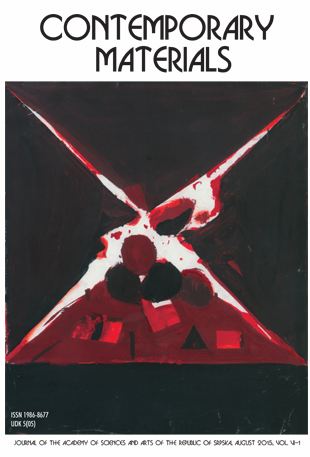REMOVAL OF NADOLOL USING COUPLED NANOMATERIALS BASED ON TITANIUM AND CARBON
DOI:
https://doi.org/10.7251/COMEN2202127VAbstract
Nadolol (NAD), one of the representatives of β-blockers, is used to treat cardiovascular diseases such as angina and hypertension. Due to its frequent use, it has been detected in hospital wastewater from which it is not removed efficiently enough, so it reaches natural waters. The lack of a satisfactorily efficient method for removing NAD from wastewater has created a need to find a more efficient way for its removal. This paper aims to investigate the efficiency of photocatalytic degradation of NAD by two TiO2-C nanocomposites with different carbon content (9 and 20 wt%) under UV radiation. The applied nanocomposites, synthesized by the sol-gel hydrothermal method, showed significant efficiency in removing NAD compared to direct photolysis. Also, the reaction rate constant, according to which the decomposition of NAD in the presence of TiO2-C takes place in the pseudo-first order, was calculated. The degradation of NAD was monitored by HPLC–PDA technique.
